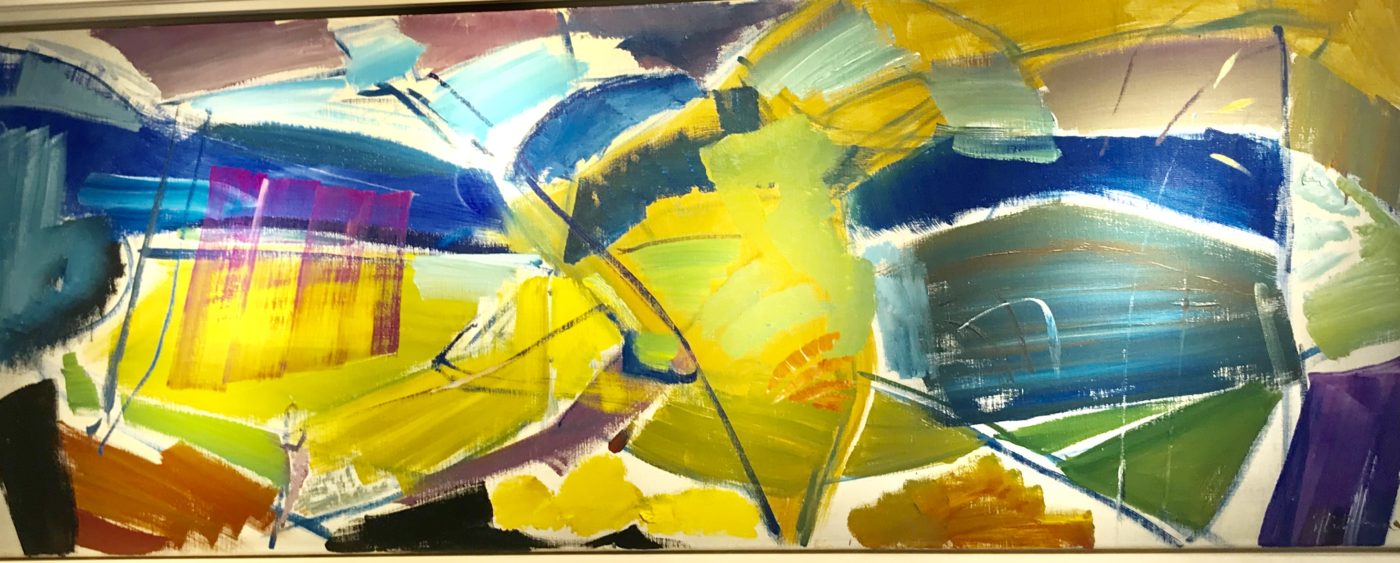A British painter, mainly of landscapes, Hitchens was born in London. He was the son of the painter, Alfred Hitchens, and studied at St John’s Wood School of Art, 1911-12 and at the Royal Academy on and off between 1912-19. In 1920 he became the founder member of the progressive Seven and Five Society and was the only artist to belong to it throughout its entire lifetime until its demise in 1935. During this time he experimented with pure abstraction, but by the late 1930’s he had created a highly distinctive style on the cusp of abstraction and figuration in which large, fluid areas of lush colour, generally on a wide landscape format canvas, evoking but not fully representing the English landscape which was his inspiration. In 1940, following the bombing of his London studio, he settled permanently at Lavington Common, near Petworth, Sussex. His work altered little from then, apart from his palette becoming more vivid and less natural. Despite this unchanging style, his work did not become stereotyped or banal. He occasionally also painted still life of flowers and nude figures and he did several large murals, for example at Nuffield College, Oxford (1959) and the University of Sussex (1963). His work is represented in the Tate Gallery, London and many public collections. His son John Hitchens is also an landscape artist.
Ivon Hitchens (1893-1979), Lake Morning, 1970

Oil on canvas
59 x 155cm